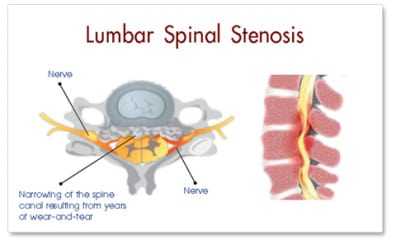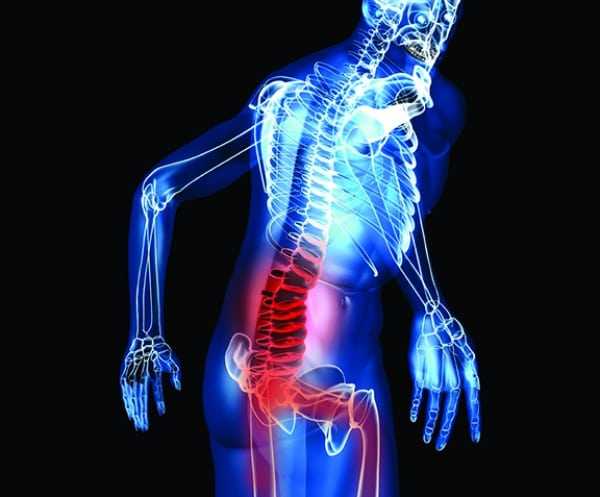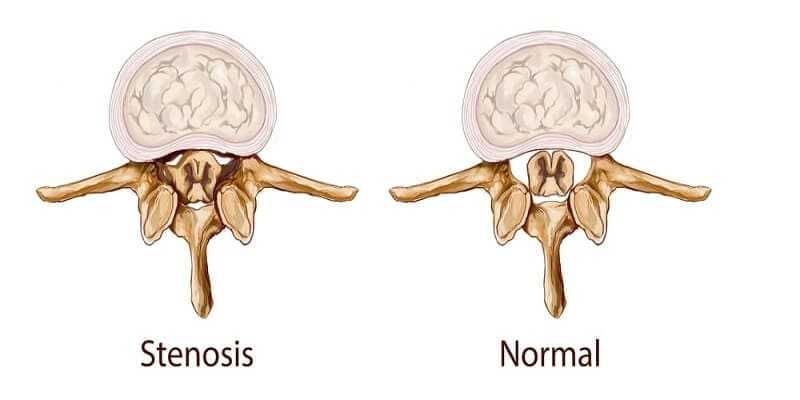Foraminal Stenosis
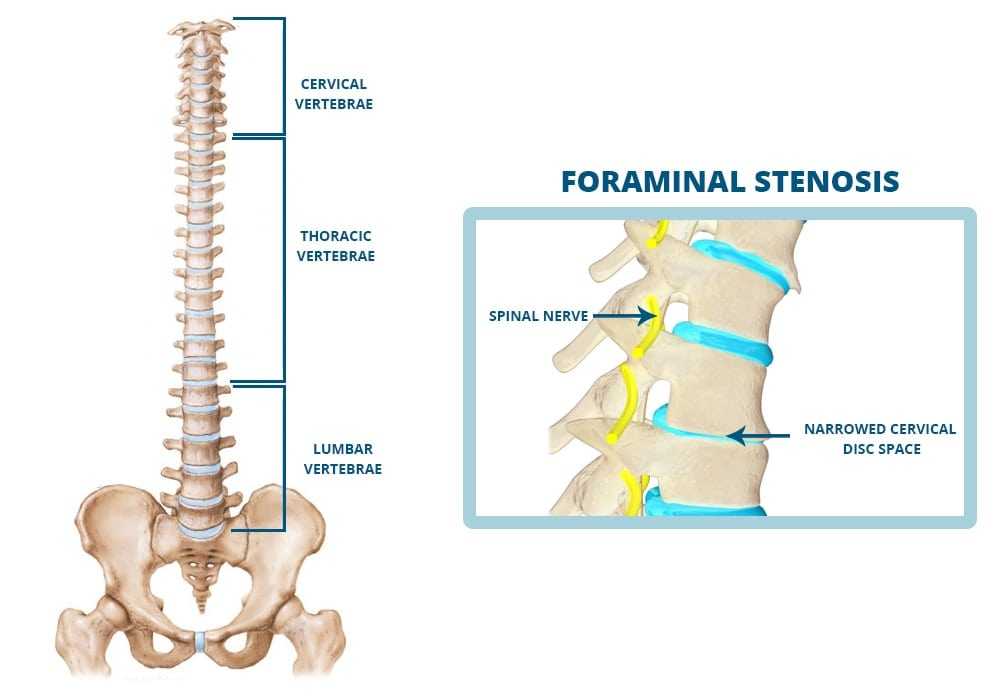
Foraminal Stenosis is similar to spinal stenosis, except that it primarily affects one or more vertebral foramen. The vertebral foramen is the opening formed by the anterior segment and the posterior part. These openings are found on either side of the vertebrae and allow passage of the nerve roots that branch off the spinal cord. It begins at the cervical vertebrae and continues to the lumbar vertebrae. The foramen consists of the spinal cord and associated meninges.
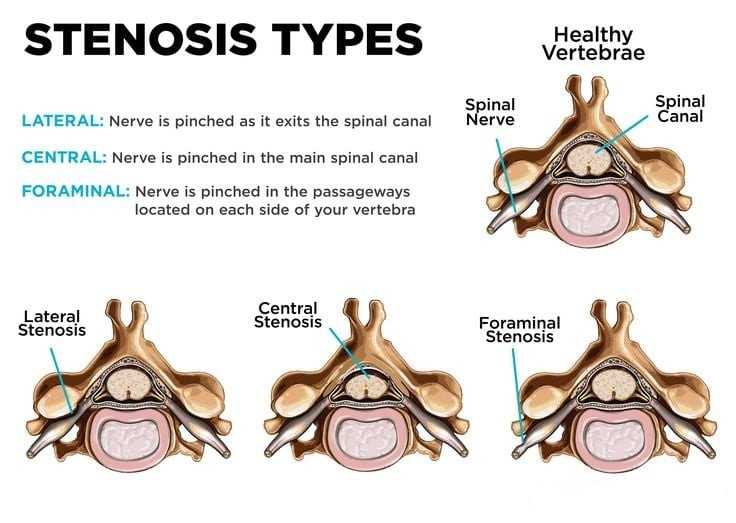
Foraminal Stenosis Definition
In a healthy spine, there is enough room for the nerve roots to slip through the foramen. As you age, your foramen can become clogged with debris that can trap and compress the nerves. This is where the stenosis begins to take effect.

Types of Foraminal Stenosis
There are three basic types of narrowing. These include:
- Bilateral
- Unilateral
- Far lateral
Bilateral is when both foramina become narrow. Unilateral is when only one foramen, either the left or right becomes narrow. Far lateral is when the area surrounding a nerve root after it has exited the foramen becomes narrow.

Common Locations for Foraminal Stenosis
This condition can occur at any level of your spine; however, it is most commonly found in the neck (cervical) and lower back (lumbar). The middle back or the thoracic region can become affected by this condition; however, this region is generally protected against age-related deterioration.
Foraminal stenosis neck and lower back symptoms can occur after years of stress-inducing movement and from supporting the weight of your head and upper body. The symptoms will occur in different areas, which is how your doctor can narrow down the type you have.
Cervical foraminal affects the head, neck, shoulders, upper back, arms, and hands. The thoracic region, which is not as common, includes your ribcage, shoulders, arms, and internal organs. The lumbar area includes your lower back, buttocks, legs, feet, and toes.
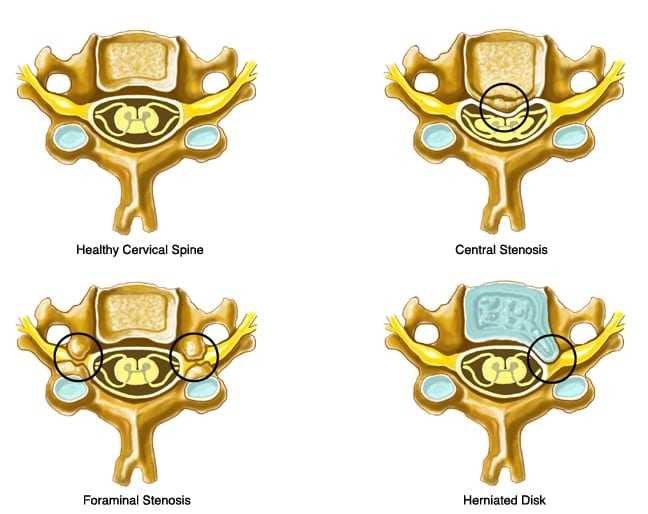
Causes of Foraminal Stenosis
Disc degeneration is the most common cause for this particular condition. Disc degeneration is generally caused from a herniated or bulging disc that occurs due to the natural aging process. This results in a narrowing of the foramen. As it continues to narrow, nerves are compressed causing symptoms.
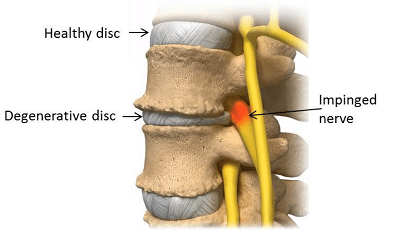
Another cause for this condition is rheumatoid arthritis or osteoarthritis of the spine. Arthritic changes in the spine can lead to nerve compression. Spinal arthritis can also create bone spurs, calcification of the spinal ligaments, thickening of joint tissue from chronic inflammation, and the degeneration of the spinal disc. These changes can narrow the space around the nerves, which will eventually cause nerve compression.
This condition can also be caused by inherited conditions, such as: congenital spinal stenosis, scoliosis, and achondroplasia.

Symptoms of Foraminal Stenosis
The symptoms will not occur until the nerves become compressed. Some of the symptoms include:
- Numbness
- Weakness
- Sensations of burning, tingling, and pins and needles in the location affected
- Functional loss, which can include the ability to feel and move
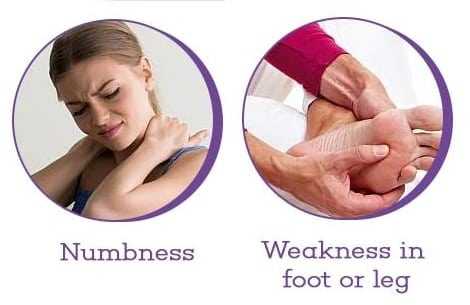
Functional loss is generally the result of the condition not being addressed. Your nerves can die, which can cause a loss of function.
Foraminal stenosis pain can generally be relieved with non-surgical methods; however, there are minimally invasive procedures available for long term relief if the non-surgical approaches are not effective.

